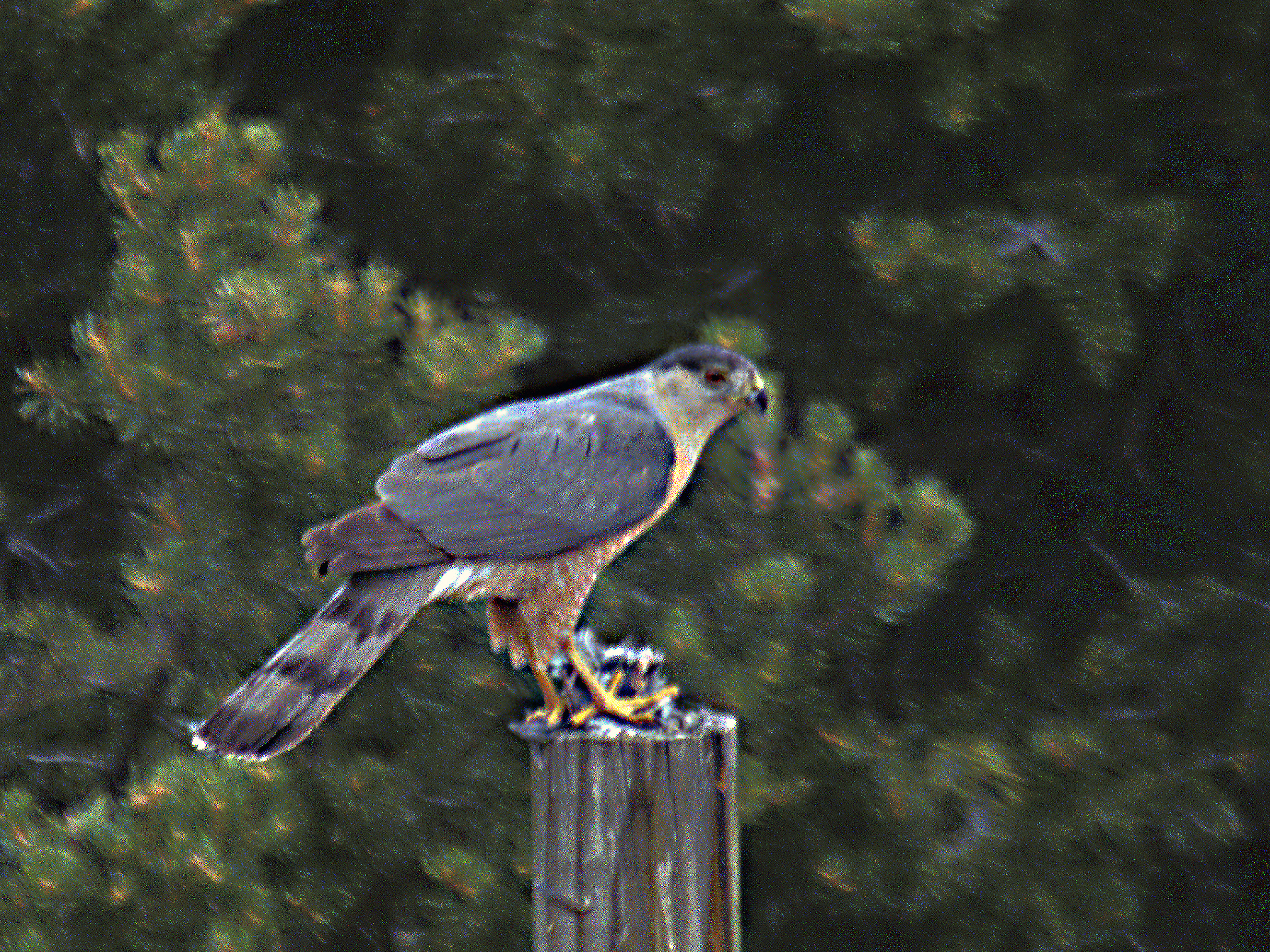The Cooper’s Hawk that’s been trapped inside the US Library of Congress reading room for the past week has been captured. She’s underweight, and will have to be rehabilitated before she’s released (presumably away from downtown Washington, DC).

I find this account of the capture interesting. You can generally tell the sex of raptors apart, because of size (females are larger than males) and sometimes markings. You can also tell she’s a juvenile- adults have different markings:

However, even though this hawk’s gender was known, reporters are having a really hard time referring to her as ‘her’- they seem to bounce between referring to her with female pronouns and gender-neutral pronouns.
I wonder what prompts this sort of confusion, in a case where the sex of a specific animal is definitely known. I know English a rare European language in which species aren’t ‘assigned’ a gender automatically (my German-speaking grandmother constantly refers to Noe as ‘he’ even though she knows she’s female!) I know the convention is to refer to animals as ‘it’- at least wild animals, that is. Maybe the author of this piece just can’t get past that convention? Then, of course, there are all the commentators that call the bird ‘he’- maybe because she’s a powerful bird of prey and therefore must be male?
This gets at one annoying issue in our cultural depictions of animals in popular media- for example, in movies like “A Bug’s Life” and “Barnyard“. Especially in animated films, the social behaviors in different species are rarely depicted correctly. This ranges from depicting animals as the normative nuclear family (e.g., “Aristocats“), to turning female animals male (as in “A Bug’s Life” and “Barnyard”). The case of “Barnyard” is particularly egregious- in that movie, the protagonist is a cow (complete with udders), but is voiced by a male actor.

Unless there is something seriously wrong with that poor bull’s genitalia, this is a really unfortunate mistake. How can you design a character whose salient bits are a hanging out for all to see, and then assign the wrong gender to it? (Okay, in this case udders are not genitalia, but you get my point.)
…Though I suppose I should give the hawk commenters the benefit of the doubt and concede that, indeed, birds do not have dangling penii to make immediate identification obvious.